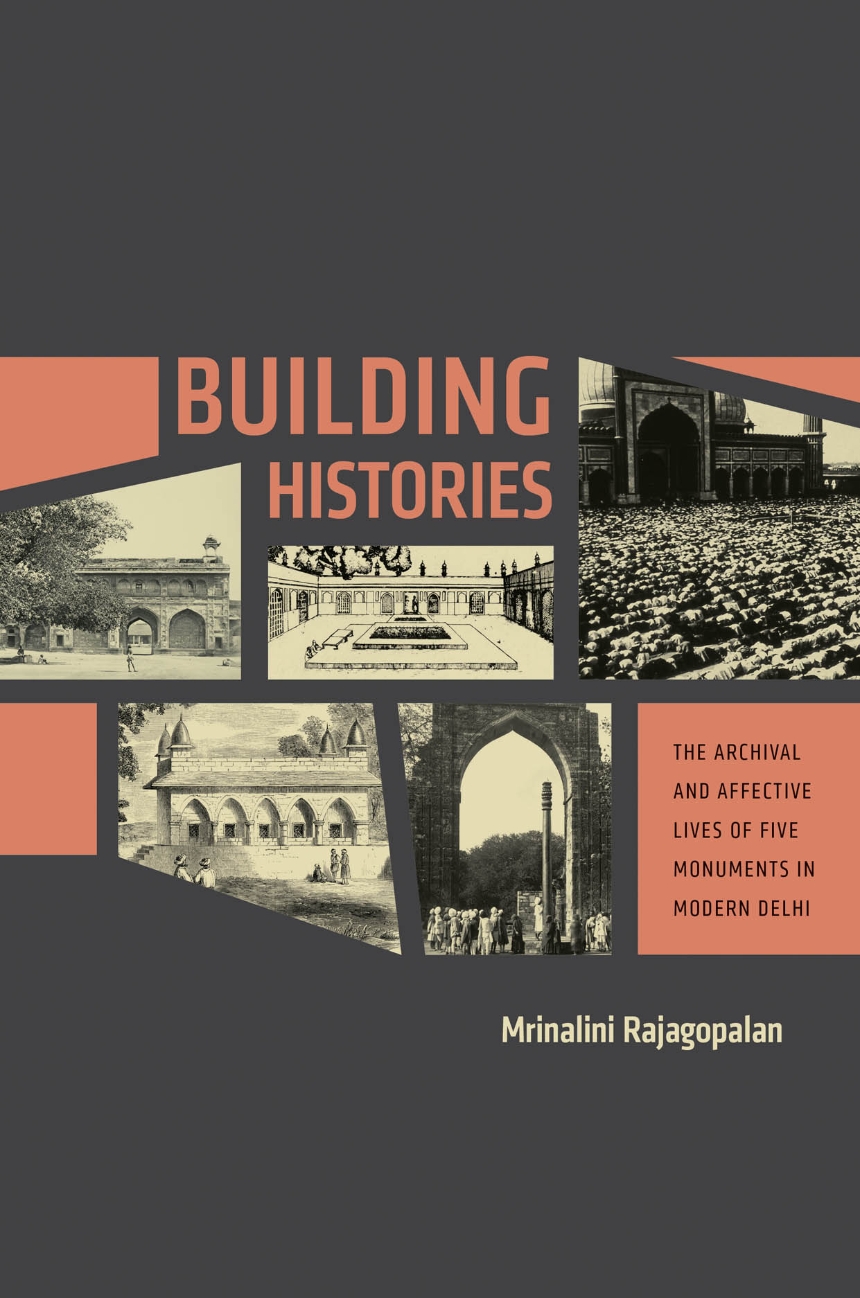Building Histories
The Archival and Affective Lives of Five Monuments in Modern Delhi
9780226283470
9780226331898
Building Histories
The Archival and Affective Lives of Five Monuments in Modern Delhi
Building Histories offers innovative accounts of five medieval monuments in Delhi—the Red Fort, Rasul Numa Dargah, Jama Masjid, Purana Qila, and the Qutb complex—tracing their modern lives from the nineteenth century into the twentieth.
Mrinalini Rajagopalan argues that the modern construction of the history of these monuments entailed the careful selection, manipulation, and regulation of the past by both the colonial and later postcolonial states. Although framed as objective “archival” truths, these histories were meant to erase or marginalize the powerful and persistent affective appropriations of the monuments by groups who often existed outside the center of power. By analyzing these archival and affective histories together, Rajagopalan works to redefine the historic monument—far from a symbol of a specific past, the monument is shown in Building Histories to be a culturally mutable object with multiple stories to tell.
Mrinalini Rajagopalan argues that the modern construction of the history of these monuments entailed the careful selection, manipulation, and regulation of the past by both the colonial and later postcolonial states. Although framed as objective “archival” truths, these histories were meant to erase or marginalize the powerful and persistent affective appropriations of the monuments by groups who often existed outside the center of power. By analyzing these archival and affective histories together, Rajagopalan works to redefine the historic monument—far from a symbol of a specific past, the monument is shown in Building Histories to be a culturally mutable object with multiple stories to tell.
272 pages | 10 color plates, 51 halftones, 1 table | 7 x 10 | © 2016
South Asia Across the Disciplines
Architecture: Middle Eastern, African, and Asian Architecture
Asian Studies: South Asia
History: Asian History
Reviews
Table of Contents
Acknowledgments
List of Abbreviations
Note on Transliteration
Introduction: The Modern Lives of Medieval Monuments between Archive and Affect
1 1857: Red Fort
Mutiny, Memory, Monument
2 1918: Rasul Numa Dargah
Interrupting the Archive: Indigenous Voices and Colonial Hegemony
3 1932: Jama Masjid
A Menacing Mosque Reveals the Limits of Colonial Power
4 1948: Purana Qila
The Many Origins of Partitioned Nations, Cities, and Monuments
5 2000: Qutb Complex
Secular Nations and Specters of Iconoclasm
Epilogue: Making New Monuments
Notes
Bibliography
Index
List of Abbreviations
Note on Transliteration
Introduction: The Modern Lives of Medieval Monuments between Archive and Affect
1 1857: Red Fort
Mutiny, Memory, Monument
2 1918: Rasul Numa Dargah
Interrupting the Archive: Indigenous Voices and Colonial Hegemony
3 1932: Jama Masjid
A Menacing Mosque Reveals the Limits of Colonial Power
4 1948: Purana Qila
The Many Origins of Partitioned Nations, Cities, and Monuments
5 2000: Qutb Complex
Secular Nations and Specters of Iconoclasm
Epilogue: Making New Monuments
Notes
Bibliography
Index
